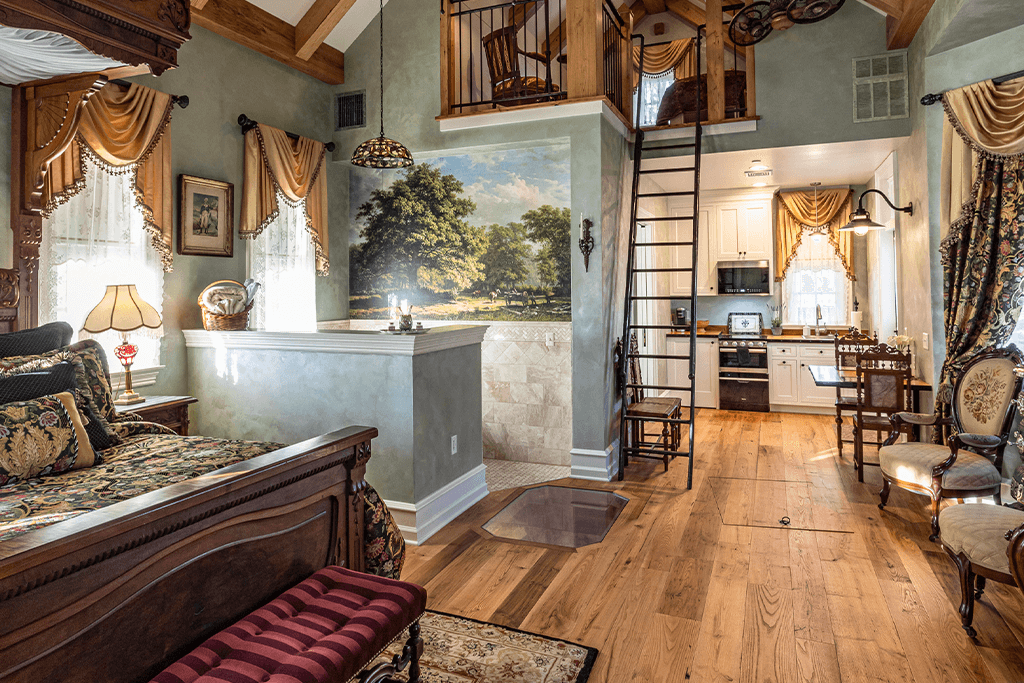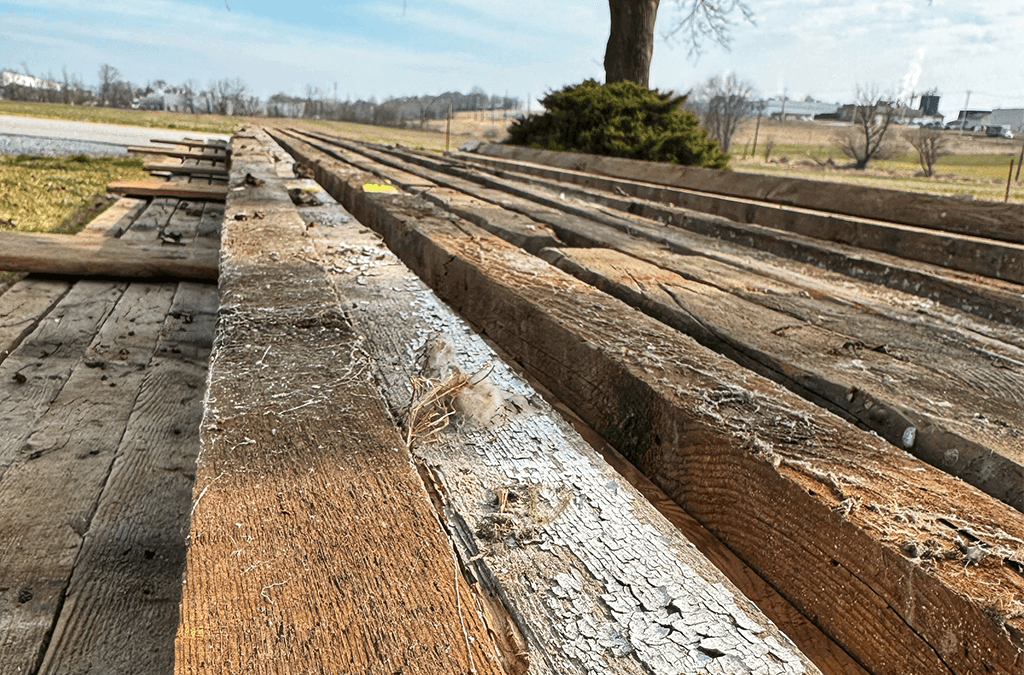Reduce, reuse, recycle. But where does “reclaim” fit into this? In the world of green initiatives and eco-conscious consumers, sustainable materials are an important piece of any home. Today we’ll cover the environmental basics of sustainable wood and reclaimed lumber.
What Is Sustainable Wood?
Sustainable wood is lumber that has been legally sourced with minimal impacts on the environment. It’s harvested with methods that protect forests and preserve biodiversity. This often looks like cutting down trees and then immediately replanting to help limit the effects of logging. Responsibly managing wood production is the key to eco-friendly lumber.
One way to spot sustainable wood is to look for a certification. The Forest Stewardship Council (FSC) is one organization that certifies lumber that meets their standards for environmentally-friendly processing. Other organizations include the American Tree Farm System (ATFS) and the Sustainable Forestry Initiative (SFI).
There are many species of eco-friendly lumber—certified oak, mango wood, and rattan are popular examples. However, reclaimed wood is the most sustainable option. It’s sourced from old barns, factories, and warehouses and then upcycled to give it new life, eliminating the need to cut down more trees. While virgin wood can lead to deforestation and harm local ecosystems, reclaimed is a green alternative.
Reclaimed vs Recycled Wood
You may have heard the terms “reclaimed wood” and “recycled wood” thrown around interchangeably. However, there are subtle differences between the two.
Recycled wood has been broken down and used in an entirely new way, to the point it doesn’t retain any of its original features. For example, wood that has been turned into mulch to use in a garden bed or compost bin.
Reclaimed wood, on the other hand, has been reused in its same form. This can be seen when an old barn is torn down to use as reclaimed wood flooring. It’s still in its original form of wood planks, but it’s being used in a new way.
When it comes to the sustainability of reclaimed vs recycled, reclaimed wood is the clear winner. Recycling and breaking down materials requires more energy than reclaiming, leading to a greater carbon footprint.
Environmental Benefits of Using Reclaimed Wood
There are lots of benefits to using reclaimed wood, from its aesthetic appeal to its strength and durability. But there are also benefits to the environment that are just as important.
1. Limits Deforestation
You may be wondering, how does reusing wood lead to sustainable forests? When you shop for reclaimed or eco-friendly lumber, there is less demand for new trees. Most forests in the U.S. are regulated, but this is not the case around the world. The international logging industry is linked to deforestation, soil erosion, wildlife extinction, and more. By reusing lumber, you extend the life of the wood and help preserve natural resources.
2. Reduces Landfill Waste
When old buildings are torn down, that vintage wood takes up valuable space in landfills. It will eventually decompose, but in the meantime, the landfill will have to expand and increase its environmental impact. But when you choose salvaged lumber, you reduce waste, preserve history, and encourage a cycle of sustainability.
3. Prevents Chemical Pollution
Another benefit of using sustainable wood from old barns and warehouses is that it’s not as processed. New wood is often treated with chemical preservatives that can run off into the surrounding area, leading to air and water pollution. Salvaged lumber cuts down on these treatments.
4. Reduces Carbon Emissions
One of the biggest environmental benefits of reclaimed wood is that it has a smaller carbon footprint. New wood is usually harvested from distant forests, while reclaimed wood is sourced locally. This reduces travel distance and carbon emissions. Reclaimed lumber also requires less energy to process and manufacture.

Sustainable Home Design Tips
Sustainability isn’t something that’s once and done. It’s a choice you make in every aspect of your life. To help you on your journey, we’ve outlined a few of our favorite sustainable home design practices.
Choose Natural or Recycled Materials
If you’re looking to make your home more eco-friendly, start with the materials you use. Wood is an earth-conscious choice since it’s a renewable resource with a 75% smaller carbon footprint than other building materials.
Wood also stores carbon dioxide. The more you can incorporate wood into everyday products, the more you are reducing the amount of carbon in the atmosphere.
Other sustainable materials to use include recycled steel, recycled glass, stone, or bamboo. While bamboo is technically a grass, it’s strong, flexible, and fast-growing (meaning it renews quickly).
Prioritize Energy Efficiency
The next way to incorporate a sustainable home design is by focusing on energy efficiency. When you reduce the energy needed to light, heat, and cool your home, you help curb the greenhouse gas emissions of your property.
The best way to do this is by starting small. Invest in high-quality windows to keep in the heat or the cold. Consider adding curtains or blinds, upgrading your lightbulbs, and adjusting your thermostat to not waste energy. These simple changes can lead to a more energy-efficient home design.
Reduce Waste
Our last tip is to limit waste. Don’t jump on the latest interior design trend, just to discard it once it’s no longer popular. Pick items with a long lifespan that you will enjoy for years to come. That’s why we love reclaimed wood. It’s a classic look that never goes out of style.
More Reasons to Choose Reclaimed Wood
Not only is reclaimed wood sustainable, but it’s also beautiful! There’s nothing quite like the natural, rustic charm it adds to your home. In addition, old-growth trees are known for their strength, making them more durable than newly-cut wood.
If you’re looking for exotic species of wood, vintage lumber is your answer. Many species, like rosewood and Spanish cedar, are illegal to harvest and are only available through salvaging. There are endless rare species out there waiting to be reclaimed and used in your project.
Lastly, vintage lumber comes with unique visual characteristics you can’t get anywhere else. From splits and checks to knots and mineral deposits, we love the unique look of sustainable wood.
See for yourself—explore some of our favorite projects below, or check out our full gallery.
Ready to incorporate sustainable wood into your home? Request a quote today!

